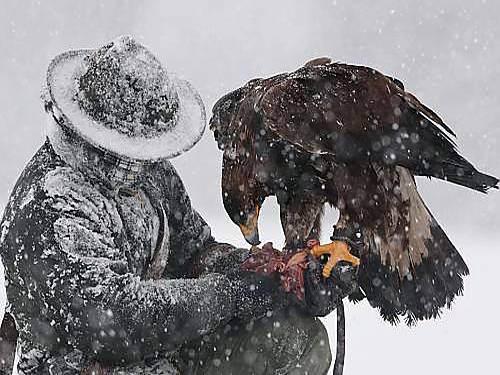Falconry, a living human heritage
Germany, Saudi Arabia, Austria, Belgium, United Arab Emirates, Spain, France, Hungary, Italy, Kazakhstan, Morocco, Mongolia, Pakistan, Portugal, Qatar, Syrian Arab Republic, Republic of Korea and Czechia
Inscribed in 2016 (11.COM) on the Representative List of the Intangible Cultural Heritage of Humanity
Originally a method of obtaining food, the practice of falconry has evolved over time to be more associated with nature conservation, cultural heritage and social engagement within and amongst communities. Following their own set of traditions and ethical principles, falconers train, fly and breed birds of prey (which includes besides falcons, birds such as eagles and hawks) developing a bond with them and becoming their main source of protection. The practice, present in many countries around the world, may vary regarding certain aspects, for example the type of equipment used but the methods remain similar. Falconers regard themselves as a group and may travel weeks at a time engaging in the practice, while in the evenings recounting stories of the day together. They consider falconry as providing a connection to the past, particularly for communities for which the practice is one of their few remaining links with their natural environment and traditional culture. Knowledge and skills are transmitted in an intergenerational manner within families by formal mentoring, apprenticeship or training in clubs and schools. In some countries, a national examination must be passed in order to become a falconer. Field meets and festivals provide opportunities for communities to share knowledge, raise awareness and promote diversity.


















